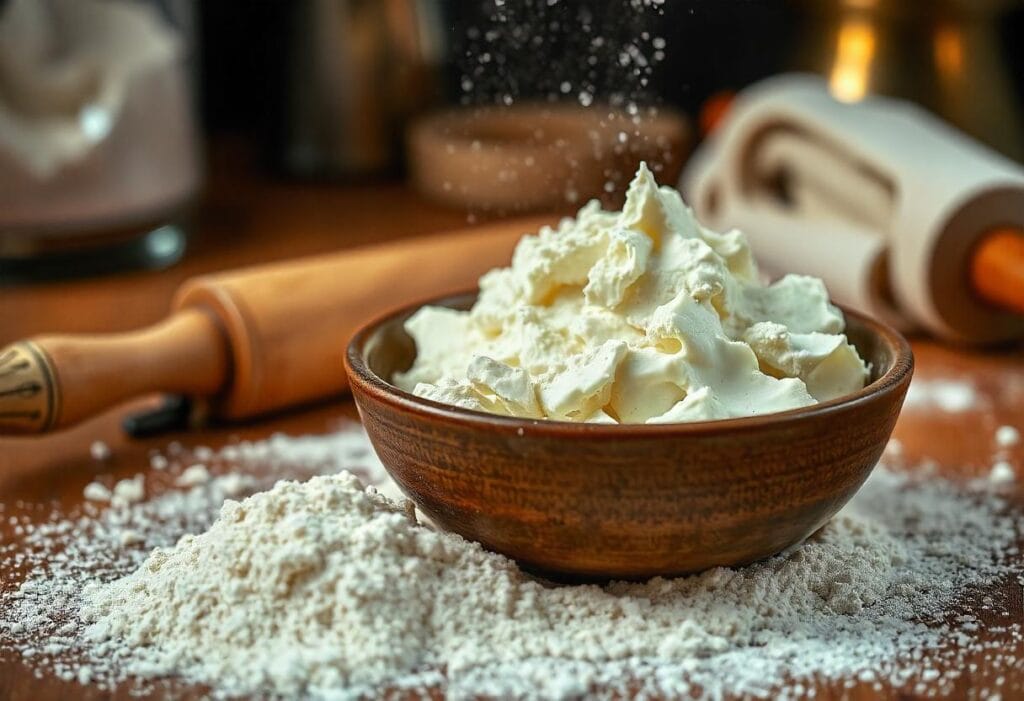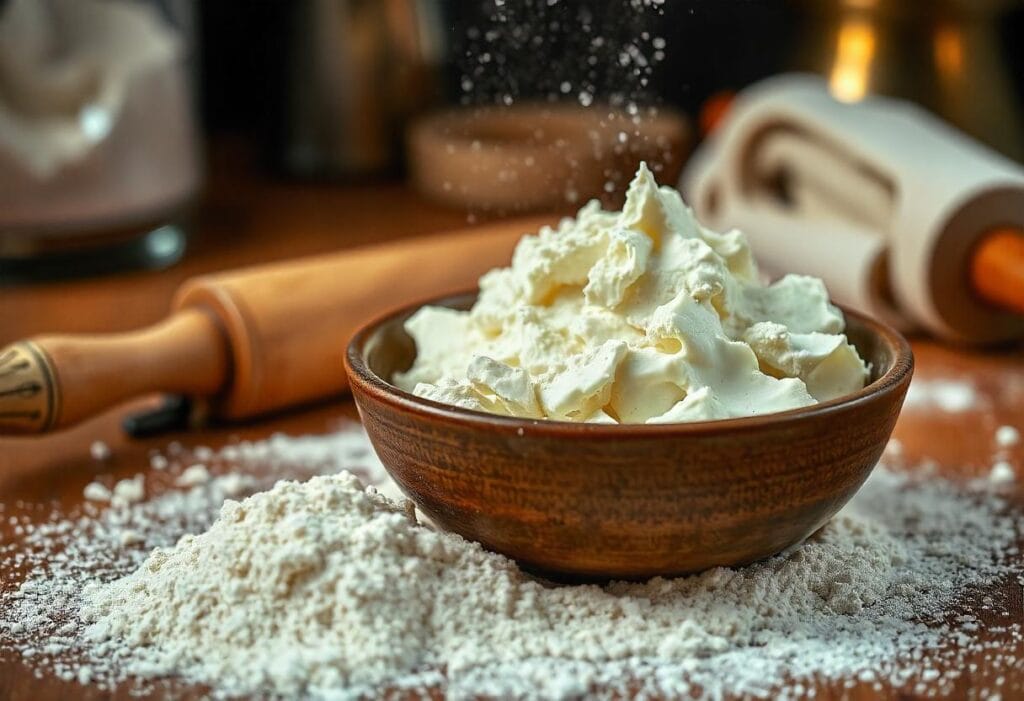Cottage cheese flatbread has gained a lot of attention as a nutritious, protein-packed alternative to traditional bread. Whether you enjoy it as a snack, a wrap, or a side dish, knowing how long cottage cheese flatbread lasts can help you enjoy it at its best. Proper storage can make all the difference in keeping your flatbread fresh and tasty.
If you’ve ever had flatbread go soggy or stale after a few days, you know how disappointing it can be. But don’t worry! In this guide, we will break down the factors that affect the shelf life of cottage cheese flatbread, how to store it correctly, and tips for extending its freshness. Let’s dive in!
Introduction: The Shelf Life of Cottage Cheese Flatbread
When you make cottage cheese flatbread, you might wonder how long it can last before it goes bad. How long does cottage cheese flatbread last? The answer isn’t always simple because several factors come into play. The freshness of your ingredients, how you store it, and how long it’s exposed to air and moisture all affect the flatbread’s lifespan.
If you’ve been lucky enough to make a batch of flatbread that’s just the right texture, flavor, and fluffiness, it’s a shame when it goes bad too quickly. The good news is that with proper storage, cottage cheese flatbread can stay fresh and delicious for quite some time.
Why Proper Storage is Important for Cottage Cheese Flatbread
Just like any baked good, flatbread needs to be stored properly to maintain its taste, texture, and quality. Cottage cheese flatbread, specifically, can be tricky because of the moisture content from the cottage cheese. If stored incorrectly, it can become soggy or dry out too quickly.
If you want to enjoy your cottage cheese flatbread for days (or even longer), it’s important to understand the best practices for storing it. This will help you prevent spoilage, sogginess, or unwanted dryness.
Understanding Cottage Cheese Flatbread Ingredients and Their Impact on Freshness
To truly understand how long cottage cheese flatbread lasts, you need to first understand the ingredients and how they influence the freshness of the bread. Let’s break it down:

How Cottage Cheese Affects the Shelf Life of Flatbread
Cottage cheese is a high-moisture ingredient, and this can be both a blessing and a curse. On one hand, the moisture content gives the flatbread a soft and tender texture, but on the other hand, it can cause the flatbread to spoil faster than regular flatbread.
The moisture from the cottage cheese can create an ideal environment for bacteria to grow, especially if the flatbread is left out at room temperature for too long. So, the more cottage cheese you add, the shorter the shelf life may be, unless you take the right precautions.
Block Quote:
« Cottage cheese flatbread is moist and soft, but that very moisture means you need to store it properly to avoid quick spoilage! » 🧀🍞
The Role of Flour and Other Ingredients in Preserving Flatbread
Flour, baking powder, and salt also play a role in the freshness of cottage cheese flatbread. These dry ingredients help balance the moisture and provide structure to the dough.
The type of flour used can also influence the shelf life. For instance, whole wheat flour tends to absorb more moisture than all-purpose flour, which can help extend the flatbread’s shelf life. However, if you are using gluten-free flour, the texture and moisture retention may differ, and you may need to adjust the storage methods accordingly.
If you’re adding extra ingredients like herbs, spices, or garlic, these can sometimes impact how long the flatbread stays fresh. For example, fresh herbs might not last as long as dried herbs, which can affect the overall shelf life.
How to Store Cottage Cheese Flatbread for Maximum Freshness
Now that we understand the ingredients, let’s explore the best ways to store cottage cheese flatbread so it stays fresh for as long as possible.
Storing Cottage Cheese Flatbread at Room Temperature
If you plan to eat your cottage cheese flatbread within a day or two, it’s okay to store it at room temperature. Just be sure to keep it in a dry, cool place, and wrap it tightly in a clean kitchen towel or wax paper. This will help maintain its moisture without making it too soggy.
Tip: Avoid storing flatbread in plastic bags at room temperature, as this can cause condensation, which leads to sogginess. Instead, opt for breathable wrapping like parchment or wax paper.
The Best Way to Store Cottage Cheese Flatbread in the Refrigerator
If you have extra cottage cheese flatbread and want it to last a little longer, storing it in the refrigerator is your best bet. Refrigerating your flatbread can extend its shelf life by up to 5 days.
To store it properly:
- Let the flatbread cool completely to room temperature.
- Wrap it tightly in plastic wrap or place it in an airtight container to prevent it from drying out.
- Label the container with the date so you know when it was made.
Block Quote:
« Proper refrigeration can help preserve cottage cheese flatbread for up to 5 days without losing too much quality! » 🥶🍞
Freezing Cottage Cheese Flatbread: Is it a Good Option?
Freezing cottage cheese flatbread is an excellent option if you want to extend its shelf life even further. If you make a large batch, freezing individual pieces can ensure you always have some on hand.
How to Freeze Cottage Cheese Flatbread:
- Let the flatbread cool completely.
- Wrap each piece tightly in plastic wrap or aluminum foil.
- Place the wrapped flatbread in a freezer-safe bag or container.
- Label with the date so you can track how long it’s been frozen.
When you’re ready to eat, just take it out of the freezer and reheat it. It’s best to thaw it in the fridge or at room temperature before reheating, as this will help preserve the texture.
How Long Does Cottage Cheese Flatbread Last in Different Conditions?
So, how long does cottage cheese flatbread last under different storage conditions? Let’s break it down:
Shelf Life of Cottage Cheese Flatbread at Room Temperature
If stored at room temperature, cottage cheese flatbread generally lasts 1 to 2 days. The key here is ensuring the bread is stored properly in a cool, dry spot, and not exposed to moisture.
How Long Cottage Cheese Flatbread Lasts in the Refrigerator
In the refrigerator, cottage cheese flatbread will stay fresh for about 5 days. Make sure it’s tightly wrapped to keep moisture in, but prevent the bread from getting soggy.
Freezing Cottage Cheese Flatbread: How Long Will It Keep?
When frozen, cottage cheese flatbread can last up to 3 months. Be sure to wrap it tightly to prevent freezer burn and preserve the flavor and texture.
Nutrition Facts for Cottage Cheese Flatbread (Per Serving)
| Nutrient | Amount |
|---|---|
| Calories | 150 |
| Protein | 8g |
| Carbohydrates | 18g |
| Fat | 4g |
| Fiber | 2g |
| Sugars | 3g |

Signs That Cottage Cheese Flatbread Has Gone Bad
Knowing when your cottage cheese flatbread has gone bad is just as important as knowing how to store it properly. It’s essential to recognize the signs of spoilage to avoid eating something that could make you sick. Here’s how to tell if your flatbread is no longer good:
Visual Indicators: Mold, Color Changes, and More
One of the first signs that your cottage cheese flatbread has gone bad is mold. Mold typically appears as fuzzy spots on the surface of the flatbread, and it’s important to throw it away if you see this.
Additionally, color changes can indicate spoilage. Fresh cottage cheese flatbread should be a soft, golden-brown color. If the color has shifted to something darker or off-putting, it might be a sign that it’s no longer safe to eat.
Tip: Always inspect your flatbread visually before consuming it, especially if it’s been stored for a few days.
Smell and Texture Changes: How to Tell If Flatbread Has Spoiled
The smell of cottage cheese flatbread can also give you clues. If it smells sour or rancid, this is a clear indication that it has spoiled. The cottage cheese in the flatbread may have fermented or gone bad.
Texture changes are another important factor. If your flatbread has become mushy or overly dry and hard, it’s likely past its prime. A fresh flatbread should be soft, fluffy, and slightly chewy in texture.
Block Quote:
« Trust your senses—if it looks, smells, or feels off, it’s better to toss it and make a new batch! » 🚮
Common Problems with Cottage Cheese Flatbread Storage and Solutions
Even with the best intentions, things can sometimes go wrong with the storage of your cottage cheese flatbread. Here are a few common problems people face and simple solutions to fix them:
Why Does Cottage Cheese Flatbread Become Soggy or Hard?
Cottage cheese flatbread can become soggy if too much moisture accumulates, especially if it’s stored in plastic bags without proper ventilation. On the other hand, it can become hard if it’s exposed to air for too long.
Solution:
- To prevent sogginess, store your flatbread in a paper towel or parchment paper to absorb excess moisture. If the flatbread is too hard, you can reheat it to bring back some of the moisture.
- To prevent hard flatbread, keep it tightly wrapped in an airtight container or plastic wrap. Reheat it with a damp cloth over it to help restore softness.
How to Avoid Dryness or Staleness in Stored Flatbread
Over time, even with proper storage, cottage cheese flatbread can become dry or stale. This usually happens if the bread is exposed to air or stored in a dry place for too long.
Solution:
- To prevent staleness, you can store your flatbread in the refrigerator or freezer, especially if you don’t plan on eating it right away. Reheat it properly using a microwave or oven to bring it back to its original texture.
- Use vacuum-sealing or airtight containers to lock in moisture and maintain freshness.
Preventing Mold and Spoilage in Cottage Cheese Flatbread
Mold is a common issue when dealing with foods that have high moisture content, like cottage cheese flatbread. If flatbread is stored improperly or left out too long, it’s a perfect breeding ground for mold.
Solution:
- Always refrigerate or freeze your flatbread if you’re not eating it immediately. If you see mold, discard the flatbread immediately and clean the container you stored it in before using it again.
Block Quote:
« Mold isn’t something you want to mess with—if you spot it, it’s best to throw the flatbread away and start fresh. » 🤢
How to Reheat Cottage Cheese Flatbread Without Losing Freshness
Cottage cheese flatbread tastes best when it’s fresh, but sometimes you need to reheat it. Luckily, you can reheat it without losing too much of its delicious flavor and texture. Here’s how to do it right:
Reheating Cottage Cheese Flatbread in the Oven
The oven is a great way to reheat flatbread because it helps retain moisture and gives it a slightly crispy texture on the outside while keeping the inside soft.
Steps to Reheat in the Oven:
- Preheat your oven to 350°F (175°C).
- Place the flatbread directly on the oven rack or on a baking sheet lined with parchment paper.
- Bake for about 5 to 10 minutes, or until heated through and crispy.
This method will keep your flatbread’s texture close to its original, fresh form.
How to Reheat Cottage Cheese Flatbread in the Microwave
While the microwave is quicker, it can sometimes make the flatbread soggy if not done correctly. Here’s a way to prevent that:
Steps to Reheat in the Microwave:
- Place the flatbread on a microwave-safe plate.
- Dampen a paper towel and cover the flatbread with it (this will keep it moist).
- Microwave for 20-30 seconds or until heated through.
This method is great if you’re in a rush, but it may not restore the crispiness from the oven method.
Best Practices for Reheating Cottage Cheese Flatbread on the Stovetop
Using a stovetop can also help bring back the texture and warmth of your flatbread.
Steps to Reheat on the Stovetop:
- Heat a non-stick skillet over medium heat.
- Place the flatbread in the skillet and cover with a lid to trap moisture.
- Heat for about 1-2 minutes on each side, until warmed through.
This option is quick and helps to restore some of the crispiness.
Nutrition Facts for Cottage Cheese Flatbread (Per Serving)
| Nutrient | Amount |
|---|---|
| Calories | 150 |
| Protein | 10g |
| Carbohydrates | 20g |
| Fat | 4g |
| Fiber | 2g |
| Sugars | 3g |
Extending the Freshness of Cottage Cheese Flatbread with Proper Packaging
To keep your cottage cheese flatbread fresher for longer, packaging is key. Here’s how you can store your flatbread to extend its shelf life:
Vacuum Sealing Cottage Cheese Flatbread for Longer Shelf Life
Vacuum sealing is one of the best methods for extending the shelf life of your flatbread. By removing all air from the packaging, vacuum sealing prevents bacteria and mold growth.
Steps for Vacuum Sealing:
- Let the flatbread cool completely.
- Place the flatbread in a vacuum-seal bag.
- Use a vacuum sealer to remove all air and seal the bag tightly.
This method helps the flatbread stay fresh in the freezer for up to 3 months.
How to Use Plastic Wrap, Foil, and Containers for Storing Flatbread
If you don’t have a vacuum sealer, you can still preserve your flatbread with plastic wrap, aluminum foil, or an airtight container. Just make sure to tightly wrap or seal the flatbread to keep moisture in and air out.
Tip: Label the wrapping or container with the date so you can keep track of how long it’s been stored.
Frequently Asked Questions (FAQ) About Cottage Cheese Flatbread Storage
Can I Leave Cottage Cheese Flatbread Out Overnight?
It’s not recommended to leave cottage cheese flatbread out overnight, especially if it contains a lot of moisture. Always store it in the fridge or freezer to prevent spoilage.
Does Freezing Affect the Texture of Cottage Cheese Flatbread?
Freezing can change the texture slightly, but it doesn’t make it inedible. The flatbread may become a bit drier or less fluffy when reheated, but it will still taste good.
How Can I Tell if Cottage Cheese Flatbread Is Still Good to Eat?
Check for visual signs of mold, any bad odors, or changes in texture. If it looks off, smells sour, or feels too hard, it’s best to discard it.
Conclusion: Tips for Maximizing the Freshness and Longevity of Cottage Cheese Flatbread
Cottage cheese flatbread is a delicious, healthy choice for a variety of meals. By following the proper storage techniques, you can extend its freshness and enjoy it for several days or even weeks. Remember to refrigerate or freeze it, reheat properly, and use the right packaging to keep it at its best. With these tips, you’ll never have to deal with soggy or stale flatbread again!


